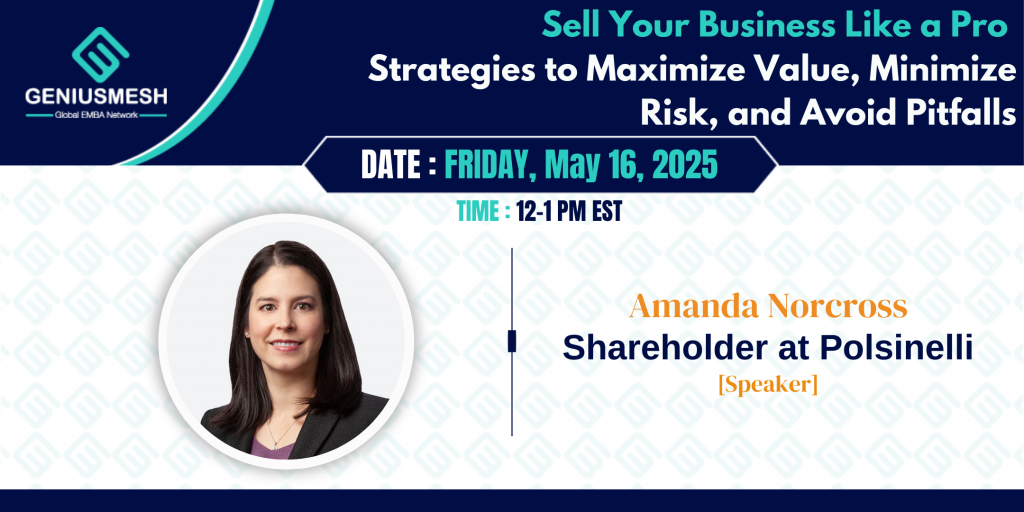Hosted by GeniusMesh | Led by David Garron, Executive Coach and Resume Writer
As the professional world continues to evolve, more executives and MBA graduates are considering career pivots, whether to pursue purpose-driven roles, return to the workforce after a break, or explore new industries. At our recent GeniusMesh event, “Creating a Career Pivot Plan: A Step-by-Step Guide,” we were joined by David, a seasoned executive resume writer, who shared practical advice and actionable strategies for making a successful transition.
Key Takeaways from the Session
1. Start with Purpose and Self-Reflection
Career transitions work best when they align with your values and long-term goals. David encouraged attendees to take stock of their leadership legacy, past achievements, and desired future direction before making a move. Purpose should guide the pivot, not just market demand.
He also stressed identifying and communicating your leadership legacy—what you’re most proud of and how it can shape your next chapter.
2. Make Transferable Skills Work for You
David emphasized that transferable skills, such as strategic thinking, project management, and cross-functional leadership, are your bridge between industries. It’s not enough to simply list them; professionals should be prepared to demonstrate how they’ve applied these skills through real-world examples.
3. Update Your Professional Brand
When pivoting, your resume and LinkedIn profile need to reflect your future aspirations, not just your past roles. David stressed the importance of presenting yourself as a thought leader by engaging in content creation, discussions, and industry involvement, especially if you’re entering a new space.He also recommended studying job descriptions of your target roles and mirroring relevant language and qualifications in your resume and LinkedIn profile to align more effectively with hiring expectations.
4. Strategic Upskilling and Certifications
Upskilling is critical to a successful pivot. David suggested obtaining industry-recognized certifications or gaining practical experience by volunteering for advisory boards or nonprofit roles. These roles boost credibility and expand your network.
5. Explore Internal Opportunities First
David highlighted that transitioning within your current organization is often easier than making an external move, especially for high performers. Shifting functions internally can leverage your existing credibility, relationships, and institutional knowledge while allowing you to stretch into a new role.
6. Tap into Advisory Boards and Consulting
Advisory and consulting roles can provide an excellent platform to explore new industries and showcase strategic thinking. David noted that even unpaid or informal roles can be valuable stepping stones. For many executives, these positions become launching pads for new careers.
7. Leverage Your Network and Engage Recruiters
Networking remains a cornerstone of career growth. Whether it’s through professional groups, alumni networks, or events like those hosted by GeniusMesh, building genuine connections opens doors. David also advised tailoring outreach to recruiters with relevant experience and using your network to uncover opportunities.
8. Navigating Career Reentry
For professionals returning after a parenting or personal break, David recommended identifying flexible consulting roles or advisory positions to ease the transition. Staying current and communicating continued learning are key to reentering the workforce with confidence.
If you missed the session or are considering your own career pivot, feel free to reach out to David Garron at davidg@geniusmesh.com. At GeniusMesh, we’re here to support EMBA professionals as they navigate growth, change, and opportunity.

The GeniusMesh team is a group of experts who are pioneers in executive hiring, unparalleled expertise in identifying and securing top-tier leadership talent. We have people from the top 30 Business schools across the globe who write thought-provoking content on Private Equity, Healthcare, Supply chain, Manufacturing, Technology, Finance, Venture Capital & other niches.
GeniusMesh is a pre-vetted network of 12k+ Executive MBAs who have over 16 years of operational & functional experience.



